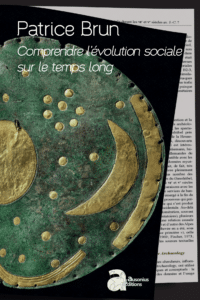UN@ est une plateforme d'édition de livres numériques pour les presses universitaires de Nouvelle-Aquitaine
Lieu d'édition : Pessac
L’ouvrage du Docteur Bernard Vigneau que nous tirons aujourd’hui d’un oubli séculaire et immérité s’inscrit dans un courant d’intérêt pour la recherche lexicographique qui s’est manifesté au siècle dernier dans tous nos pays de langue d’oc.
L’histoire politique des pays situés entre les Pyrénées, l’Océan et la Garonne – en gros la Gascogne – repose sur des sources peu nombreuses, d’interprétation parfois difficile – notices de cartulaires – ou sur des “histoires” et généalogies rédigées dans un but intéressé et qu’il convient donc d’accueillir avec la plus grande prudence.
On sait que cette publication est un des monuments de la science historique française de la seconde moitié du XIXe siècle et du premier tiers du XXe. On est redevable de son existence à Jules Delpit, qui prit également la part la plus large à la création de deux autres sociétés savantes girondines, sans compter la Société historique et archéologique du Périgord.
Langon
Le début de cet article a été publié dans le numéro 172, 1er trimestre 2011.
L’Hôpital
La commune de Marimbault confronte : au nord-ouest, à celle de Lignan ; au nord, à celle de Bazas (ruisseaux du Bois Baquey et du Basque) ; au sud, à celles de Cudos et de Bernos ; à l’ouest, à celle de Pompéjac. Elle a la forme d’un rectangle (nord-sud : 2,3 km ; est-ouest : 2,8 km).
par Patrice Brun
Lancée il y a une quarantaine d’années, l’enquête archéologique menée par Patrice Brun se caractérise par une hausse plus élevée que prévue de l’échelle spatiale et temporelle du champ documentaire envisagé au départ.
Officiellement créé en 1860, le musée d’Annecy a été fondé à l’instigation de l’Académie florimontane avec la volonté de documenter l’histoire régionale par la constitution de collections d’histoire naturelle, d’archéologie, de beaux-arts et d’ethnologie.
Les agrafes de ceinture, tout comme les fibules, ont très tôt suscité l’intérêt des chercheurs. Malgré le manque d’objets disponibles et l’absence quasi-totale de contextes fiables, les premières études régionales sont à attribuer à J.-P. Mohen, réalisées dans le cadre de sa thèse et dont les résultats publiés en 1980 ont durablement marqué l’étude du premier âge du Fer dans le sud-ouest de la France.
Uno de los primeros elementos de vestimenta que se difundió de manera generalizada entre el sur de la península ibérica y el Golfo de León fue el broche de cinturón de garfios con decoración prevista en el molde, normalmente con uno sólo.
This publication is the result of a workshop held in Alicante on 24-25 November 2023, dedicated to the study of belt elements made of non-perishable materials attested during the first half of the 1st millennium BCE. The geographical scope of the study encompasses Iberia, northern Italy and southern France.
Los estudios tipológicos son una práctica poco habitual en la península ibérica, especialmente para los objetos metálicos. Sin embargo, creemos necesario avanzar en la realización de estos estudios que buscan organizar conjuntos de objetos a fin de poder analizar e interpretar de forma racional la información arqueológica.
Uno de los elementos más singulares de entre todo el repertorio de ornamentos de vestimenta metálicos prerromanos de la península ibérica son las placas y cinturones tartésicos.




